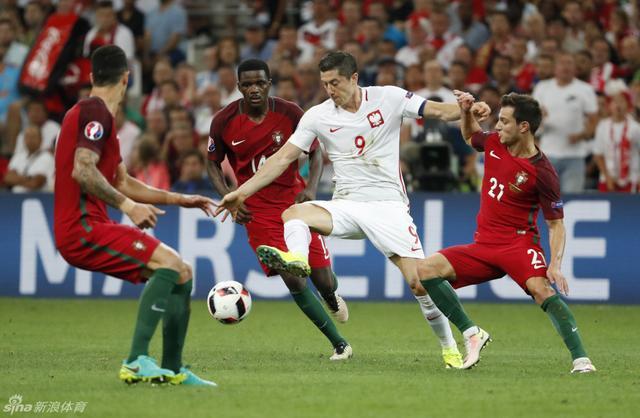The Paddles of Passion:Exploring the World of Table Tennis in English
Introduction
Table tennis, also known as ping-pong, is a sport that has captivated audiences worldwide with its speed, agility, and strategic play. Originating in the late 19th century in England, it has since evolved into a global phenomenon, with players from various countries showcasing their skills on the international stage. In this essay, we will delve into the world of table tennis, exploring its history, rules, techniques, and the impact it has had on English-speaking communities and beyond.
The Origins and Evolution of Table Tennis
The game of table tennis has a rich history that dates back to the Victorian era. It was initially played as an after-dinner parlor game among the British upper class, using books as nets and cigar box lids as paddles. The name "ping-pong" was coined by the Jaques company, which manufactured the first commercial table tennis sets in 1901. The game quickly gained popularity and spread to other English-speaking countries, such as the United States and Australia.
As the sport developed, it became more organized, and in 1926, the International Table Tennis Federation (ITTF) was founded to regulate the sport and establish standardized rules. The ITTF has since played a crucial role in the growth of table tennis, overseeing the introduction of new equipment, such as the celluloid ball, and the adoption of the 11-point scoring system.
The Rules of the Game
Table tennis is played on a rectangular table divided by a net. The game is played with a lightweight ball and small paddles, and the objective is to hit the ball in such a way that it bounces on the opponent's side of the table and they are unable to return it. The rules are relatively simple, yet they require a deep understanding of strategy and technique.

A match is typically played to the best of five or seven games, with each game being won by the first player to reach 11 points. If both players reach 10 points, the game is extended until one player has a two-point lead. The server must strike the ball so that it bounces on their side of the table and then on the opponent's side without touching the net. The rally continues until one player fails to make a legal return.
Techniques and Tactics
Mastering table tennis requires a combination of physical prowess and mental acuity. Players must be able to move quickly and react to the ball's unpredictable bounces. Several techniques are used in the game, including the forehand and backhand strokes, the serve, and the smash.
The forehand stroke is a powerful offensive move, where the player swings the paddle in a forward motion, hitting the ball with the back of the hand. The backhand stroke is used when the ball is too far to the side for a forehand, and it involves hitting the ball with the palm side of the hand. The serve is a crucial part of the game, as it allows the server to dictate the pace and direction of the rally. A good serve can catch the opponent off guard and set up an opportunity for a winning shot.
The smash is an aggressive technique used to end a rally quickly. It involves hitting the ball with force, causing it to bounce low and fast on the opponent's side, making it difficult for them to return. Players must also be adept at reading their opponents' moves and adapting their strategies accordingly.
The Impact of Table Tennis on English-Speaking Communities
Table tennis has had a significant impact on English-speaking communities, both as a recreational activity and as a competitive sport. In schools and community centers, it is often used as a way to promote physical fitness and social interaction. The sport's accessibility and affordability make it an attractive option for people of all ages and skill levels.
At the professional level, table tennis has produced many English-speaking players who have achieved international success. Players like England's Matthew Syed, who won a bronze medal in the 2004 Athens Olympics, and Australia's William Henzell, who reached the quarterfinals in the 2008 Beijing Olympics, have inspired a new generation of players in their respective countries.
Table tennis also has a strong presence in the English-speaking world through media coverage and events. The World Table Tennis Championships and the Olympic Games are major events that attract global attention, and English-language sports channels often broadcast these competitions, bringing the excitement of the sport into homes around the world.
The Future of Table Tennis
As table tennis continues to grow in popularity, there is a focus on innovation and development within the sport. New technologies, such as the introduction of plastic balls to replace celluloid, are being implemented to improve the game's sustainability and safety. Additionally, there is a push to increase the sport's visibility and accessibility, with initiatives like table tennis being included in school curriculums and the establishment of more public playing facilities.
Conclusion
Table tennis is a sport that has transcended cultural and linguistic barriers, becoming a beloved pastime and competitive activity in English-speaking communities and beyond. Its rich history, engaging gameplay, and global appeal make it a fascinating subject for exploration. As the sport continues to evolve and expand, it is sure to capture the imagination of players and spectators alike, ensuring that the paddles of passion will continue to be wielded for years to come.
体育资讯
MORE>- 搜索
- 最近发表
-
- NBA湖人vs猛龙128-111全场解析:詹姆斯戴维斯联手制胜,关键转折与战术深度剖析
- 梅西球衣退役了吗?探索足球传奇的球衣故事
- 掌握天气的英语表达,日常对话中的实用指南
- 揭秘四川省大乐透兑奖中心,中奖者的梦幻之地
- 选号码的艺术,掌握技巧,让数字为你带来好运
- 足球术语的英文表达,从球场到术语的全面指南
- 掌上财经助手,如何轻松下载手机新浪财经APP
- 探索新浪财经手机版首页,您的移动金融信息中心
- 探索露天体育场的英文魅力,从草坪到看台的全球语言
- 足球盛宴,2026世界杯预选赛18强赛程全解析
- 探索北京鸟巢体育场,奥运遗产与现代建筑的融合
- 新浪财经手机版,随时随地掌握财经脉搏
- 探索英语中的尺码表达,37码鞋的地道说法
- 如何用英语表达累,实用表达与生活场景
- 掌上排球激情,新浪体育手机版女排,随时随地的体育盛宴
- 解锁体育场的英语密码,从日常对话到国际赛事
- 头晕目眩,英语表达的艺术
- 探索四川福彩网开奖,揭秘背后的机制与幸运时刻
- 梦想成真,四川省双色球开奖结果的奥秘与魅力
- 足球的绿洲,运动场地足球场的魅力与影响
- 标签列表
-
- 2024年欧洲杯预选赛 (15)
- 2024欧洲杯比赛时间 (16)
- 2024欧洲杯百度百科 (21)
- 2024欧洲杯杯 (11)
- 为啥欧洲杯 (9)
- 2024欧洲杯完整赛程表 (9)
- 欧洲杯在哪个国家举行2024 (10)
- 欧洲杯一共多少场 (9)
- 欧洲杯参赛球队有几支 (14)
- 欧洲杯哪个国家厉害 (12)
- 欧洲杯多少支球队参加 (9)
- 欧洲杯共多少场比赛 (11)
- 2024欧洲杯主办城市 (11)
- 欧洲杯哪个队最有可能进决赛 (12)
- 2024年欧洲杯主办国 (11)
- 欧洲杯一场多少人 (12)
- 哪个地方可以看欧洲杯 (10)
- 在哪里可以看欧洲杯预选赛 (23)
- 欧洲杯一场比赛时间多长 (9)
- 欧洲杯一共多少球队 (14)
- 欧洲杯为什么没有中国 (9)
- 欧洲杯有多少只球队参加 (14)
- 直播培训学校 (10)
- 直播吧 (16)
- 直播吧官网 (11)


